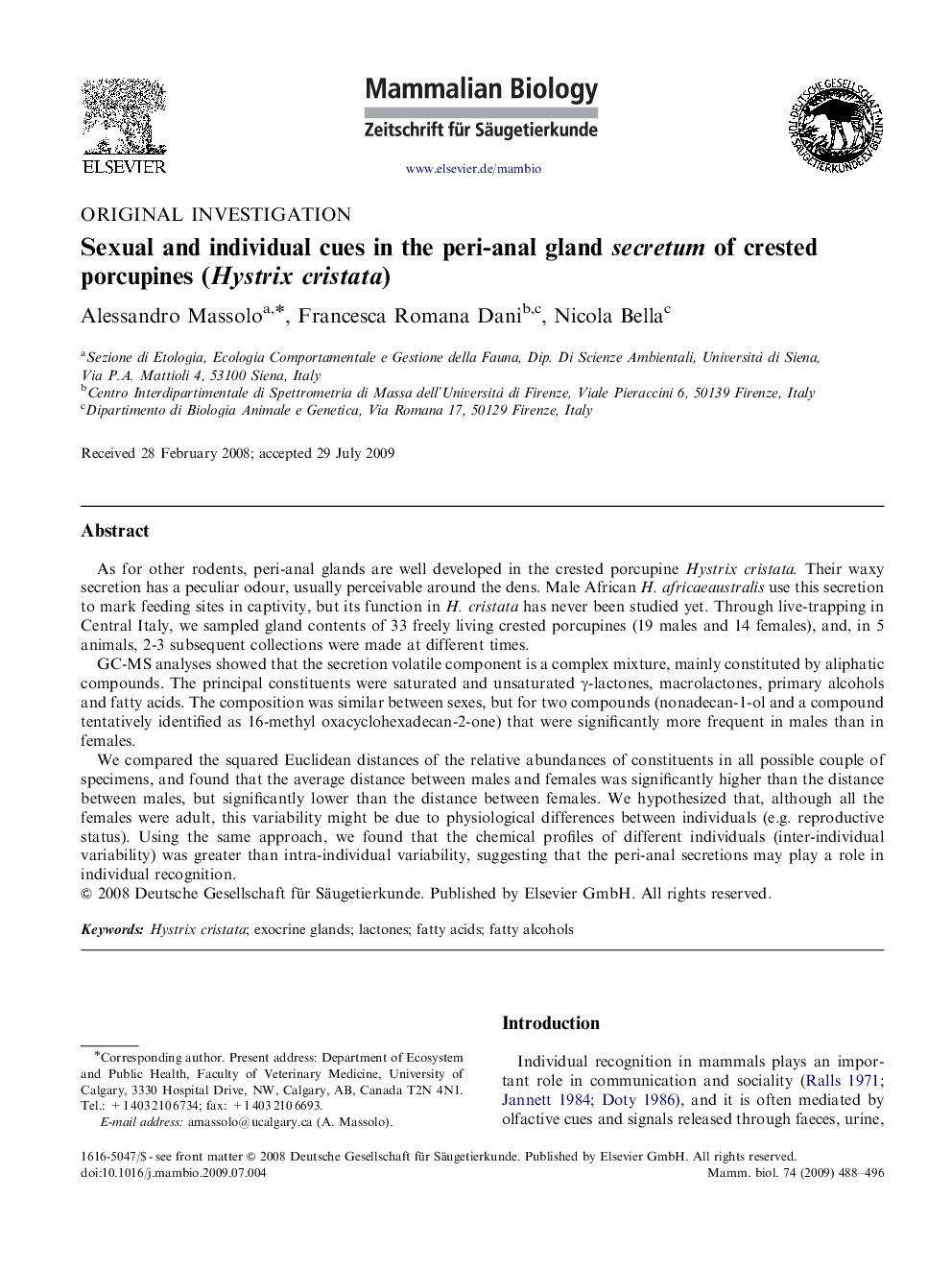| Article ID | Journal | Published Year | Pages | File Type |
|---|---|---|---|---|
| 2194306 | Mammalian Biology - Zeitschrift für Säugetierkunde | 2009 | 9 Pages |
As for other rodents, peri-anal glands are well developed in the crested porcupine Hystrix cristata. Their waxy secretion has a peculiar odour, usually perceivable around the dens. Male African H. africaeaustralis use this secretion to mark feeding sites in captivity, but its function in H. cristata has never been studied yet. Through live-trapping in Central Italy, we sampled gland contents of 33 freely living crested porcupines (19 males and 14 females), and, in 5 animals, 2-3 subsequent collections were made at different times.GC-MS analyses showed that the secretion volatile component is a complex mixture, mainly constituted by aliphatic compounds. The principal constituents were saturated and unsaturated γ-lactones, macrolactones, primary alcohols and fatty acids. The composition was similar between sexes, but for two compounds (nonadecan-1-ol and a compound tentatively identified as 16-methyl oxacyclohexadecan-2-one) that were significantly more frequent in males than in females.We compared the squared Euclidean distances of the relative abundances of constituents in all possible couple of specimens, and found that the average distance between males and females was significantly higher than the distance between males, but significantly lower than the distance between females. We hypothesized that, although all the females were adult, this variability might be due to physiological differences between individuals (e.g. reproductive status). Using the same approach, we found that the chemical profiles of different individuals (inter-individual variability) was greater than intra-individual variability, suggesting that the peri-anal secretions may play a role in individual recognition.
